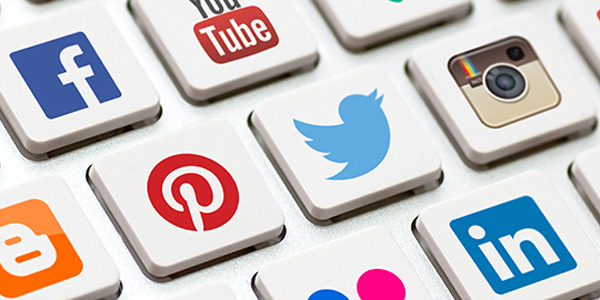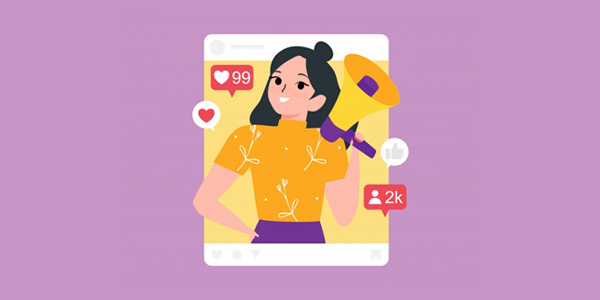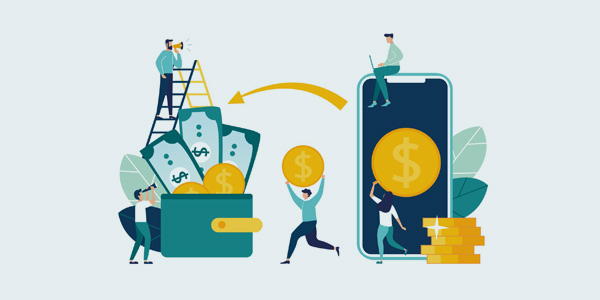- Tools
- Learn
- Help
Before you leave..
Why not download RevGlue latest free eguide.

If you’ve scrolled through Instagram lately, you’ve surely seen #influencer posts with paid disclosures and #sponsored tags. Some of the biggest brands use social media influencers in their marketing strategies. A few years ago, Subaru hired @devinsupertramp for their #MeetAnOwner campaign, designed to target Millenials.
https://youtu.be/GJdEqU6l7pw
Devin Graham is an American YouTuber with over 6 million subscribers. His campaign with Subaru, featuring a slip and slide off a cliff has been seen by over 1.2 million people.
If you’re wondering whether influencer marketing is right for your brand, the answer is yes! Influencer marketing can help you reach new audiences, drive sales, and build brand trust in a way traditional marketing cannot.
As with all forms of marketing, though, influencer marketing must be done correctly to be effective. Today, we’ll talk about influencer marketing— what it is, the different types of influencer marketing, how to successfully create a campaign, the logistics behind determining an influencer marketing strategy, and how to define success.
What is influencer marketing?

Influencer marketing is a strategy that uses targeted social media influencers with an engaged audience to increase brand awareness, promote a product, and drive sales. Its strength lies in the authenticity of the influencer and the trust build between the influencer and their audience.
Why does your brand need an influencer marketing strategy?

A 2021 survey by technology services company, Inmar Intelligence, reveals that 84% of respondents have made a purchase based on an influencer’s recommendation. Why? In a world where mistrust is on the rise, 41% of respondents say they can trust influencers because they’re authentic and 47% say they can relate to influencers.
With 42.7% of worldwide internet users enabling adblockers to avoid direct brand messages, influencer marketing is becoming more and more important in order to reach a new audience.
Is it effective? The results speak for themselves. The Inmar Intelligence survey shows that 88% of respondents aged 41 - 56 say they’ve made a purchase based on an influencer’s recommendation. Ten percent of those surveyed have spent over £724 on influencer recommendations within the past year.
Trust, access, and authenticity make influencers a powerful acquisition channel for your next marketing campaign.
Once you’ve decided to use influencers in your marketing plan, it’s time to create a strategy. Consider your budget, timeline, products or services to promote, a theme, and a target audience. Establishing a plan before talking to influencers is key, otherwise, you could end up wasting money and an opportunity for growth and sales.
How should you select which social channels to reach your audience?

Before you start your research on which influencer will best represent your brand, it’s important to choose a platform. Not all social media is created equal— and selecting the platform or platforms where your potential audience is most active is key when creating your influencer marketing strategy.
Consider age range, gender, and interests when choosing your platform. Sure, Instagram and TikTok each have over one billion monthly users, but if your brand’s potential clients are spending their time on Twitter and LinkedIn, your money will be wasted on the visually-driven platforms.
Instagram and TikTok are great options for travel, beauty, food, and fashion while tech influencers tend to attract an audience on YouTube and Twitch.
Once you’ve chosen your platform, it’s time to start researching influencers.
How do you choose your influencers?

Choosing an influencer is the next big step in ensuring your brand’s influencer marketing ROI.
Start with the low-hanging fruit. Are there influencers who already love your brand and talk about it without payment? In a world where authenticity is valued above all else, transitioning unpaid influencers who use and promote your brand into a paid partnership is a great place to start.
It can be tempting to assume that the influencers with millions of followers will be more effective than the ones with five or ten thousand followers— but that’s not always the case. Don’t just look at an influencer’s follower count. Dig a little deeper. Look at likes and comments. Remember, quantity doesn’t equal quality. Comment pods (influencers commenting on each others’ posts) can artificially inflate the number of likes and comments, but won’t translate into sales for your brand.
And of course, their niche is important. If you’re a restaurant, don’t choose a fashion blogger to promote your new menu. No matter how amazing your food looks and tastes, a fashion blogger’s followers engage based on what the influencer is wearing. Choose a food blogger to promote food and a fashion blogger to promote fashion.
Ask for a media kit with demographics. You may think an influencer’s demographics match yours, but if you’re going to invest, you need to know for sure— especially if your business is gender, age, or location-specific.
Which method of communicating with influencers yields the best results?

Most influencers’ inboxes are full of unsolicited message requests that begin, “I think you’d be a great ambassador for our product,” “We think your audience would love to know about this…,” and “Sorry to drop into your DMs, but we’d like to work with you.” Most of those brands will never receive a response.
Think of influencer marketing as a professional “online dating” service. In order for the campaign to begin, interest on both sides is required. If the influencer can tell you’ve sent a blanket, generic DM, your message will be deleted in less than the time it took you to copy/paste.
Instead, craft a thoughtful proposal for the influencer. You’ve selected them for a reason— maybe you’re impressed with their engagement, use of color, sense of humor. Tell them. Influencers are people, after all, and a little affirmation goes a long way.
When you create your influencer marketing strategy, you should also create an influencer brief that includes:
Set expectations early and upfront so there is no confusion later. Once the influencer looks over the brief, they may have questions, negotiate payment, or request alternate deliverables.
After you’ve agreed on payment, deliverables, and timing, it’s time to sign a contract. Having agreed-upon terms in writing protects you and the influencer in case things don’t happen as discussed via email.
What are the influencer campaign types?

When you built your strategy, you defined your goals. Do you plan to use influencer marketing to increase brand awareness? Drive sales? Announce a product launch? Your campaign goals will determine the best campaign type for your brand.
Product sampling
If generating brand awareness is your mission, product sampling is a great option. Oftentimes, brands will exchange products for promotion, making this method a relatively cost-effective form of influencer marketing.
Product review - Because authenticity is the cornerstone of trust, product reviews are a great way to promote product awareness. Select your influencer with care. Giving free rein while asking for an honest review can be risky if your product isn’t a great fit for the content creator.
Demo - If you’ve created a new or revolutionary product, objective #1 is to get the word out about your product and how it can enhance a user’s life. Utilize an influencer to define a problem and demonstrate how your product solves it.
Unboxing - Who doesn’t love receiving gifts? Hit the serotonin center by encouraging influencers to post an unboxing of your product. This is especially effective for beauty, fashion, and food subscription boxes.
Giveaway - Want to grow your account and increase brand awareness? A product giveaway can accomplish both. Stop the scroll with a giveaway that requires a social media user to follow your brand, tag a friend (or multiple friends), and like the image to enter the giveaway.
Product launch
Royal and Reese is an online retailer for women’s and children’s clothing. Sharon McMahon has over 689,000 followers on Instagram. She’s known as America’s Government Teacher, but she also regularly tries on clothes from subscription boxes— which are usually fashion fails. Royal and Reese reached out to create some fashion wins, and the Sharon Says So line is now live on their website. For campaigns with mega-influencers, co-branding and launching a product can drive big sales.
Paid campaign
Paid influencer marketing campaigns come in two forms: sponsored and revenue-sharing. A sponsored campaign is a one-time payment for a determined number of deliverables. Revenue-sharing offers a way for influencers to make money on an ongoing basis through affiliate links. Promo codes and affiliate links offer an easy way to track influencer success and reward long-term partnerships.
Seasonal campaign
The most wonderful time of the year can be the most lucrative time of the year for brands. Cut through the noise of holiday ads with a targeted influencer campaign or ask to be included in their holiday gift guide round-up.
How should you pay your influencers?

There is no one-size-fits-all category for influencer payments. Factors like the influencer’s audience size, engagement, deliverables, and your budget should be considered when making an offer to an influencer.
If you have a small budget, consider engaging several nano (1,000 - 10,000 followers) and micro (10,000 - 50,000) influencers rather than just one or two macro (500,000 - 1 million) or mega (1 million +) influencers.
Some influencers may be happy to work on a product sampling basis— completing the campaign in exchange for your product. Influencers with larger audiences, often require set payment for the posts or videos they share. In some cases, a revenue-sharing model may work well for your brand and the influencer. This affiliate model provides ongoing commissions to an influencer for sales driven by their personal link or discount code. Be sure to consider your sales funnel when choosing an affiliate model to make sure this is a fair option for you and the influencer.
Begin every conversation with an influencer with a budget in mind, and be prepared to negotiate.
How to measure success?

While the hard work and back-and-forth may be over when the last post goes live, the campaign isn’t over yet. There are a few ways to measure key performance indicators and track influencer marketing ROI.
Give influencers exclusive discount codes to offer their followers, or share revenue in an ongoing partnership through affiliate links. Both methods give influencers an exclusive, trackable way to share, so you can track sales attributed to each influencer.
When you build your contract, be sure to include expectations about how and when statistics will be shared. Ask for screenshots of story views and interactions, in addition to post insights for permanent content.
The content may live on the influencer’s platform, but don’t be afraid to interact with comments on the sponsored posts. Answer questions, thank people for complimentary comments, and be an active presence. Every positive encounter with your brand brings potential customers one step closer to a sale.
Amplify social media content with RevSocial
Influencers and content creators use the RevSocial tool from RevGlue to browse millions of discounted offers and products available to share on social media in order to earn commissions.
Want to automate your influencer campaigns? RevGlue can help you save time and money on your data management while the influencers come to you for only £60 per month.
Conclusion
Oberlo reported that almost 93% of marketers are using influencer marketing this year.
Influencer marketing is on the rise, and there’s no evidence that it will slow down anytime soon. Will you take advantage of the marketing strategy that has earned the trust of social media followers across the world or will you stick to tried-and-true methods— even as the results dwindle?
Take a chance on influencer marketing and benefit from the strategy predicted to be worth £10 billion this year.